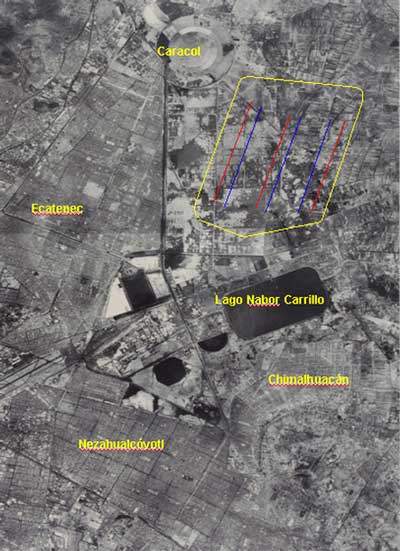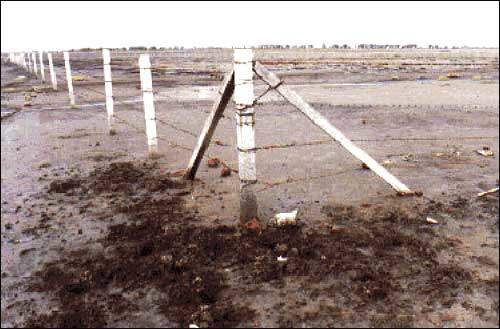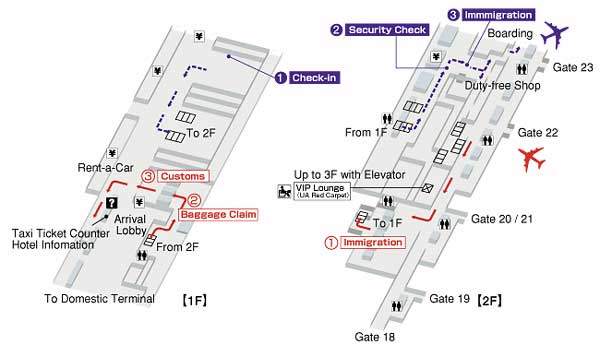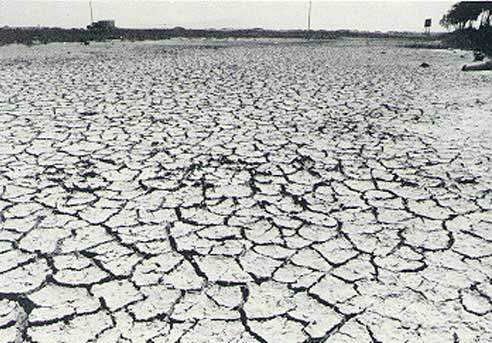The Mexican Government have been planning the construction of a new airport to ease pressure off Mexico city’s Benito Juarez International Airport, which has been running at capacity for years. After much debate, the new airport will be built at Texcoco, which is 34km east of Mexico City, and 12km from the current airport at an estimated cost of $2.8 billion. Approved in October 2001, the site covers 16,000 acres of land in a disused and drained lake within easy access to the city. Construction of the airport will cover 5,000 acres and the rest of the site will be an
environmental recovery area. Texcoco Airport will begin construction in early 2003, and operations will begin in 2007, with the final airport opening in 2014 at the same time as the Benito Juarez closes down.
BACKGROUND
The current airport for Mexico City has operated at capacity for years as only one runway can be used at a time, with 21 million passengers passing through in 2000. Traffic is expected to reach 26 million in 2005 and double to 42 million by 2015. There have been extensive tests and research done on expanding the Benito Juarez Airport, which is only eight miles from the city, but it has been decided that there is not enough space. Texcoco Airport will have a maximum capacity of 90 million passengers per year, and direct access to the city.
The project will be funded by private investors, and will create 20,000 jobs. Development partners include consultants, State and Federal Governments and the Massachusetts Institute of Technology Research and Engineering (MITRE). The consultants include the Associations of Air Traffic Controllers and of Aeronautical Engineers; the Mexican Pilot’s Association; the National Chamber of Air Transport; and the University of Mexico Institute of Engineering.
ALTERNATIVE SITES
Three main options were open to officials:
- The extension of the present airport was seen as unfeasible, due to space, cost and environmental opposition. Built in 1928, the airport was not expected to be so successful and cannot fulfil demand
- The second option was to build the new airport at Hidalgo, but this was seen as too far away from Mexico City to gain sufficient investment, and it was thought that it would interfere with flights from a nearby military base. In addition to this, Hidalgo was estimated to have a fiscal cost of almost ten times as much as Texcoco
- The third option was Texcoco, which has been chosen for its long-range use and flexibility. It was seen to be 40% cheaper than the alternatives, and technically more feasible
AIRPORT CONSTRUCTION
The project has identified a number of areas for development, including three parallel runways for simultaneous use and three back-ups in case of overspill. It also covers a major terminal building, three shopping malls and a hotel and restaurant complex. The designs are based on environmentally sustainable technologies, recycling, water and waste treatment and reuse. These projects collectively represent one of the largest major investments and developments in the northern hemisphere.
Investment in the area is creating a snowball effect, and causing a number of other positive social changes. These include a university, which is due for opening in 2003 and will cover many airport specific fields. It will also involve a hospital and a variety of social care and public security initiatives, including new urban zones, rehabilitation of historic areas, road and public transport infrastructure, housing and motorways. There are already substantial multimodal transportation links available, but this will be further developed as the area attracts industry.
CONTRACTORS AND SUPPLIERS
The International Trade Office in the US is recruiting companies in architectural, environmental and engineering services, airport equipment supplies, maintenance, avionic and spare parts. The project offers opportunities for US exporters of products, services and technology. The Federal Government is receiving construction proposals that will be picked by 15 July 2002. The accounting capital for interested parties is two million Mexican Pesos ($210,820). The Mexican Communications and Transportation Secretariat will publish bids inviting private sector firms to participate in the projects in the third quarter of 2002, and these will be chosen before the beginning of 2003. Local companies will be looking to partner with foreign construction, architecture and engineering companies with solid financial backgrounds.
ENVIRONMENTAL SUPPORT
The airport developers are very aware of the importance of the Texcoco area on the environment, especially on the flight paths of migratory birds. To ensure that the site does not adversely affect the local region, the hydraulic system is being regulated to increase capacity, water quality is being improved and large wild and recreation areas are being created for flora and fauna. It has been argued that without the economic support of the airport sponsors, the ecological rescue of the area would not be affordable and the migratory paths of some endangered species of birds would be
disrupted by the collapse of the water-lands.











